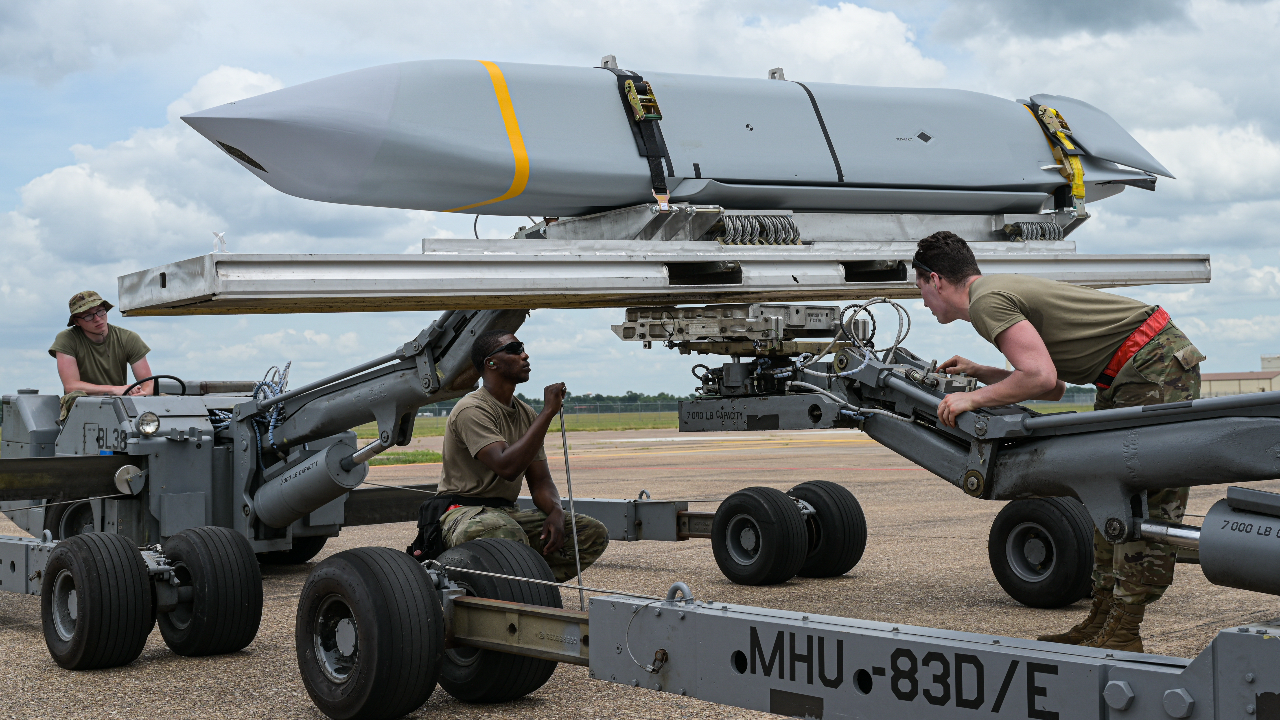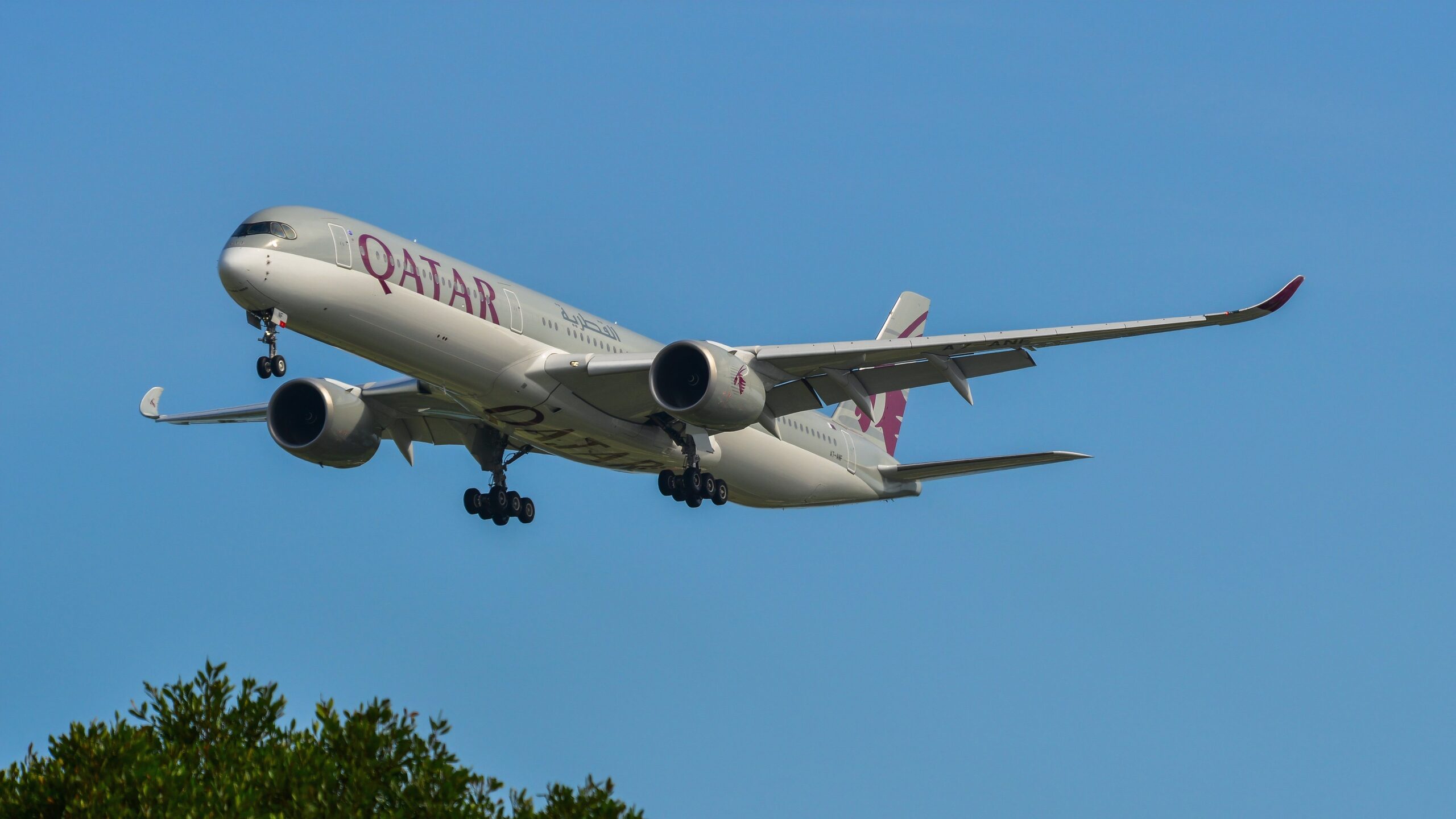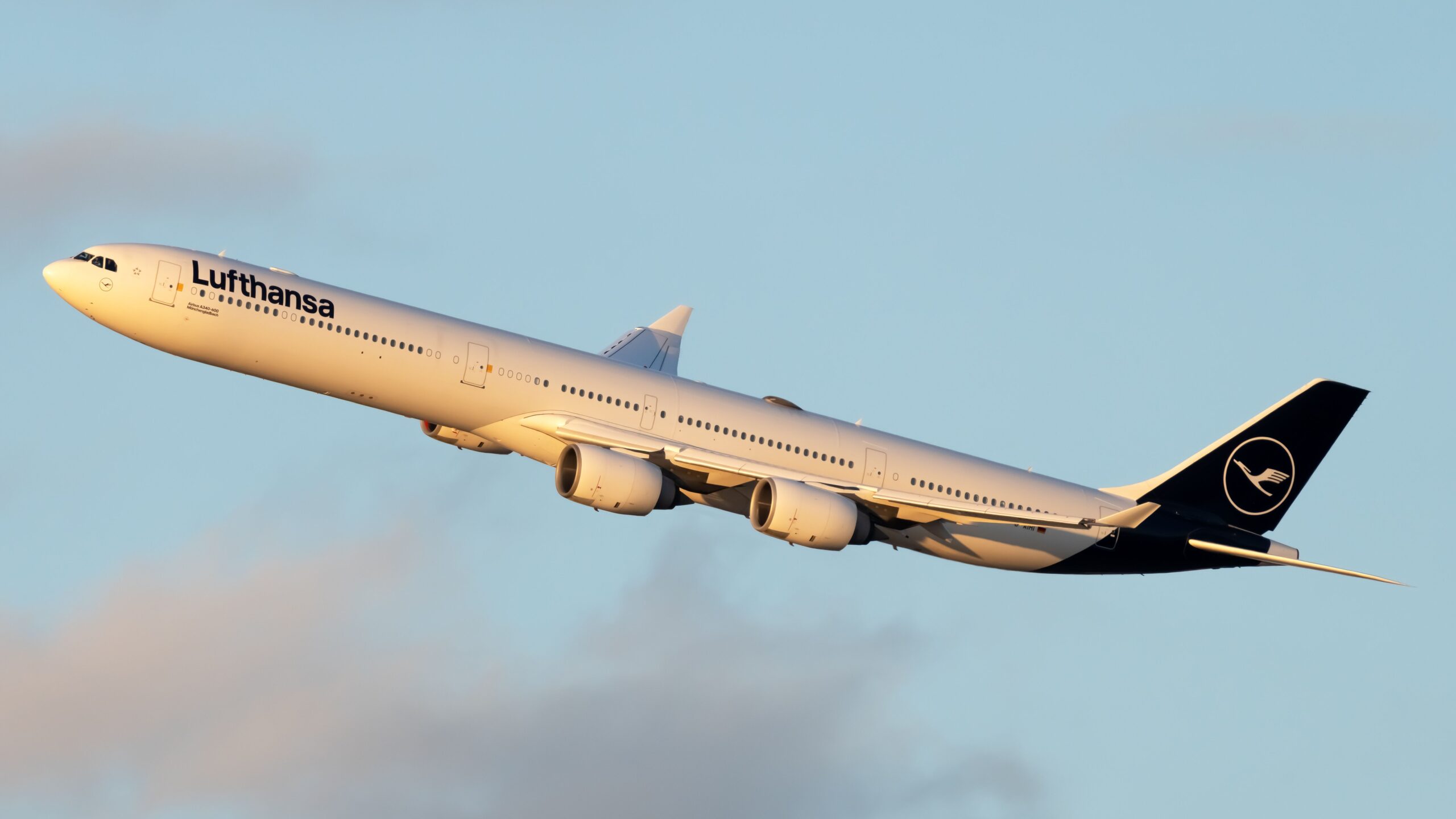Summary
- B-1 Lancer equipped with advanced avionics jamming systems for defensive missions.
- The aircraft can carry various air-launched missiles and bombs for strategic missions.
- It is versatile in engaging moving targets due to precise navigation systems.
The Rockwell B-1 Lancer is a variable-sweep supersonic bomber designed for the United States Air Force. One of three strategic bombers, alongside the B-2 Spirit and B-52 Superfortress, the B-1 performed its maiden flight in December 1974 and entered service with the ISAF in 1986. This article explores some strategic uses of the heaviest US bomber.
1
Defensive countermeasures
Jamming against early warning radars
- EDO Corporation AN/ALQ-161 avionics suite
- IBM AP-101 F Digital controller
- Northrop Grumman jamming transmitters
- Raytheon phased array antennas
- Raytheon pulse Doppler radar
The B-1B Lancer is equipped with a state-of-the-art avionics suite and digital computers for jamming against early warning radars. The system considers several signature parameters to block aircraft information, including its location. The B1-B Lancer is strategically used for defensive missions, including those for fire control radars of missiles and anti-air guns.
Photo: DLeng l Shutterstock
Due to its installed location, the tail warning pulse Doppler radar provides rear-facing hemispherical coverage against enemy targets. Chaff and flare dispensers are used as countermeasure mechanisms, enabling a greater level of system reliability.

Related
5 Fast Facts On The Powerhouse B-1B Lancer
The B-1B Lancer weathered an initial storm of controversy and is now nearly 50 years old. Here are 5 fun facts about this bomber,
2
A versatile launcher of weaponry
Air-launched cruise missiles and short-range attack missiles
- Six external hardpoints for ordnance with a capacity of 50,000 pounds (23,000 kg)
- AGM-154 Joint Standoff Weapon (JSOW)
- AGM-158C Long Range Anti-Ship Missile (LRASM)
- AGM-158 Joint Air to Surface Standoff Missile (JASSM)
- AGM-183 Air-Launched Rapid Response Weapon (ARRW)
- Mk-82 low drag general-purpose (LDGP) bombs
- GBU-38 JDAM GPS-guided bombs (Mk-82 GP warhead)
- GBU-38 JDAM (using rotary launcher mounted multiple ejector racks)
- GBU-54 LaserJDAM (using rotary launcher mounted multiple ejector racks)
The B1-B Lancer is utilized on strategic missions involving air and ground launches. The aircraft’s three internal weapon bays with a 75,000 lbs payload capacity, and six external under-fuselage hard points carrying up to 50,000 lbs of payload, provide the required mission support.
Photo: Airman 1st Class Emma Anderson | U.S. Air Force
According to the Air & Space Forces Magazine,
“Its [B1-B Lancer] three internal weapons bays can carry the largest payload of guided/unguided weapons in the Air Force inventory, and its blended wing/body and variable-geometry wing permit long-range/loiter time.”

Related
US Air Force B-1Bs Meet Russian MiG Fighter Jet During Barents Sea Mission With Norway
The USAF bombers were intercepted as they approached Russian airspace before turning around.
3
Air Combat Command
The USAF mission deployments
- Operation Desert Fox
- Operation Allied Force in Kosovo
- Operation Enduring Freedom in Afghanistan
- Invasion of Iraq
The B-1 has been used in a variety of air combat missions, particularly in Iraq during Operation Desert Fox in 1998, in Kosovo, in Afghanistan, and the 2003 invasion of Iraq. During air command operations, a variety of conventional weapons are used, including the GBU-31 JDAM.
Photo: Simple Flying
The most notable use of the JDAM war weapons was over Iraq in 2003, in an effort to assassinate Saddam Hussein and his two sons. Nearly 4,000 JDAMs were used during the first six months of the mission, making the B-1 Lancer one of the most used aircraft. Eight B-1 bombers dropped almost 40% of the total ordnance used in the mission. The B-1 Lancers achieved a mission-capability rate of over 79%.

Related
What Is The Rockwell B-1 Lancer’s Top Speed?
The production version B-1B can reach Mach 1.2. The original prototype was faster.
4
Global Strike Command
Recent B-1 Lancer Global Strike missions
- July 2017: North Korean border to show force
- April 2018: Bombing of Damascus and Homs
- March 2021: Norway’s Orland and Bodo Main Air Stations
- February 2024: Terrorist targets in Iraq and Syria
The United States Air Force (USAF) reassigned its B-1 Lancers from Air Combat Command to Global Strike Command in 2015. The move came during political unrest in several nations and worldwide geopolitical. In 017, the USAF deployed B-1s near the North Korean border to show force. It was primarily in response to North Korea’s test of an ICBM that is capable of reaching the state of Alaska.
April 2018 saw the use of B-1s to launch JASSM missiles in Damascus and Homs in Syria. In 2021, the Air Force will utilize several B-1s for training missions with Norwegian and Swedish ground forces. Earlier this year, several locations in Iraq and Syria were struck utilizing USAF B-1s to target terrorist groups in response to the killing of three US troops in Jordan.

Related
Bad To The ‘Bone’: How Did The B-1B Bomber Get Its Nickname?
The USAF has 45 active B-1B bombers based in South Dakota and Texas.
5
Engaging moving vehicles
Capable of tracking and targeting moving objects and vehicles
- 1x AN/APQ-164 forward-looking offensive passive electronically scanned array radar
- 1x AN/ALQ-161 radar warning receiver and defensive jamming equipment
- 1x AN/ASQ-184 defensive management system
- 1x Sniper Advanced Targeting Pod (optional)
The versatility of the B-1 Lancer lies in its speed, endurance, and mission reliability compared to conventional bombers. The aircraft is equipped with precise instruments, including state-of-the-art navigation systems, to carry out air missions more precisely and efficiently.
Photo: USAF
According to the Air Force,
“The B-1 is a highly versatile, multi-mission weapon system. The B-1B’s synthetic aperture radar can track, target, and engage moving vehicles as well as self-targeting and terrain-following modes. In addition, an extremely accurate Global Positioning System-aided Inertial Navigation System enables aircrews to navigate without the aid of ground-based navigation aids as well as engage targets with a high level of precision.”

Related
Battle Of The Bombers: Boeing B-52 Stratofortress Vs Rockwell B-1 Lancer
A thorough comparison of two of the most capable bombers in the USAF arsenal.
What are your thoughts on the strategic uses of the B-1 Lancer? Share your views in the comments section.









